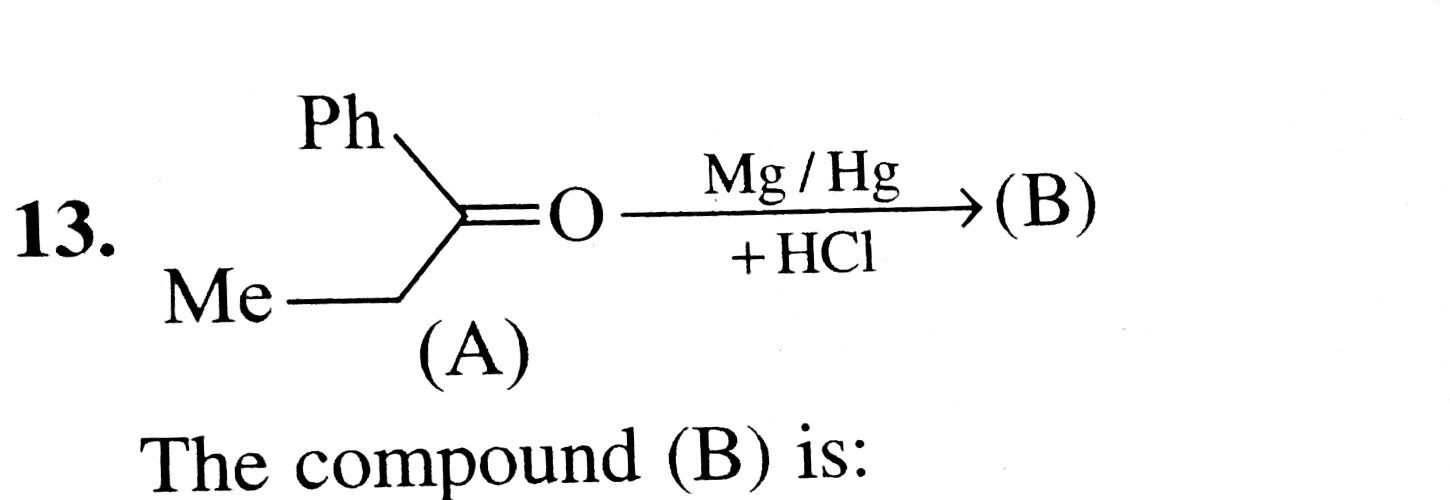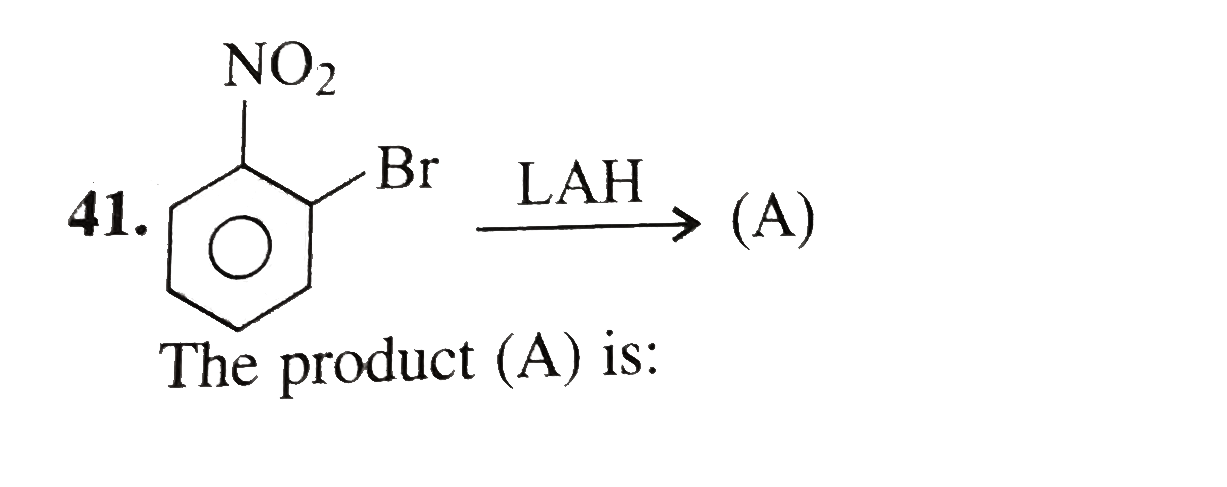Complete Solutions to Exercise (Single Correct) of chapter REDUCTION AND OXIDATION REACTION OF ORGANIC COMPOUNDS of Class 12 book with complete answers and questions
| Class 12 | CHEMISTRY |
| Chapter | REDUCTION AND OXIDATION REACTION OF ORGANIC COMPOUNDS |
| CENGAGE CHEMISTRY | Exercise (Single Correct) |
| Number Of Questions | 90 |
| Academic Year | 2023-24 |
Which of the following gives yellow precipitate with
View Solution `
`
The products (A) and (B), respectively, are:
View SolutionCompound
View Solution
The compound (C ) is:
View Solution
The compound
View Solution
The compound
View Solution
The compound
View Solution
The compound
View SolutionAcid-catalysed hydration oxymercuration-demercu-ration, and hydroboration oxidation reaction will give the same product with:
View SolutionThe increasing order of the rate of oxidation with

View SolutionCompound

The compound
View SolutionConpound
The compound
View Solution
The compound
View SolutionWhich type of reaction in the reduction of carbonyl compound with
View SolutionOxidation of aldehyde and ketone by peroxybenzoic acid to ester is called:
View Solution
The compounds
View Solution
The products
View Solution
The products
View Solution
The products
View SolutionFor the following reaction, which of the following sttaments is correct?

View Solution
The Product
View Solution
The products (A) and (B), are:
View Solution
The products
View Solution
The products
View Solution
The product
View Solution
The product
View Solution
The product
View Solution
The product
View Solution
The product
View Solution
The reagent
View Solution
The reagent
View SolutionIn Rosenmund reduction, which of the following does not poison the catalyst
View Solution
The reagent (A) is:
View Solution
The products (A), (B), and (c ) are:
View Solution
The products (A), and (B) are:
View Solution
the products (A) and (B) are:
View Solution
The products (A), (B), and (c ) are:
View SolutionThe catalyst and solvent used in
View Solution
The reagents
View Solution
The products
View Solution
The product `(A), is:
View Solution
The product `(A), is:
View Solution
The product `(A), is:
View Solution
The product `(A), is:
View Solution
The product `(A), is:
View Solution
The product
View Solution
The product
View Solution
The product
View Solution
The product
View Solution
The product are:
View SolutionToluene on reaction with
View SolutionThe final product obtained in the oxidation of t-butyl benzene with
View SolutionAn aromatic compound
View Solution
The product
View SolutionIdentify

View SolutionThe compound
View Solution
The product
View Solution
The product
View Solutionan Organic compound
View SolutionAn alkene on ozonolysis yields only ethanal. There is an isomer of the alkene which on ozonolysis yields:
View Solution
View SolutionWhich of the following is an incorrect statement?
View Solution
View SolutionThe oxidation product of
View SolutionChromic anhydride in
View SolutionWhich of the following reactions is correct?
View SolutionFehling's solution can make distinction between:
View Solution
View SolutionSuggest a suitable oxidising reagent for the following conversions:


View Solution
View SolutionWhich of the following compounds will not give haloform reaction?
View SolutionIdentify the set from the following which connot form acetone in a single-step reaction.
View Solution
View Solution
View SolutionWhich of the following does not give Liebermann's nitroso reaction?
View SolutionOf the following compounds, whose ozonolysis proves the Kekule structure of benzene?
View Solution
View Solution
Which of the following compounds are
View Solution
The compound (A)
View SolutionFenton's regent
View SolutionLactic acid on oxidation with Fenton's reagent gives:
View Solution
The compounds
View Solution
View Solution
The compound
View Solution
The compound
View SolutionWhich single reagent can be used in the following conversions?

View Solution
View SolutionImines or enamines are selectively reduced to
View SolutionCaprolactam on reduction with
View SolutionCaprolactam on reduction with
View Solution
Exercise (Single Correct) questions and complete solutions for chapter REDUCTION AND OXIDATION REACTION OF ORGANIC COMPOUNDS of CENGAGE CHEMISTRY (ENGLISH) of Class 12